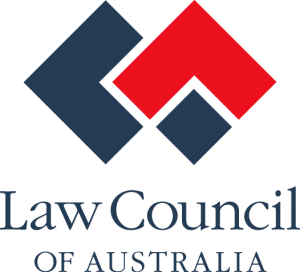- TAX LAWYERS, TAX ADVISORY, TAX COMPLIANCE, EXPATS - SYDNEY, BRISBANE, MELBOURNE, CANBERRA
- 1300 334 518
- admin@waterhouselawyers.com.au
The ATO sent a garnishee notice to my bank – now what?
Tax Debt
The ATO sent a garnishee notice to my bank – now what?
One of the tools in the ATO’s tax debt collection arsenal is a garnishee notice. These can be issued to anyone who owes you money, requiring them to pay that money to the ATO instead. If you’d like to know more about how the ATO uses garnishee notices and who it can issue them to, click here.
Garnishee notices are often sent to banks, requiring the bank to transfer money straight from your bank account to the ATO, without consulting you.
The ATO should send you a copy of the garnishee notice that it has sent to your bank.
If you’ve opened the mail to find a copy of a garnishee notice, you’re probably in a panic. The ATO can’t just take your money like that – can it?
Unfortunately, it can. But there might be some things that you can do to stop the situation from getting worse.
Act quickly
You should act as quickly as possible once you receive a copy of a garnishee notice.
By the time you get a copy of it, the bank may have already acted on it and sent money off to the ATO.
But, the bank may not have transferred your money yet, or the notice may require the bank to transfer any future deposits to the ATO. This is why you should work quickly to check that the notice is actually valid and to negotiate with the ATO to withdraw the notice.
Do you actually owe the money?
The ATO has been in trouble before for issuing a garnishee notice before actually assessing the tax.
If the garnishee notice comes as a complete surprise to you because you didn’t know that you had a tax debt, then it’s possible that the garnishee notice is invalid. In this case, you should seek the assistance of a tax lawyer, as the next steps can be quite complex.
It’s not often that a garnishee notice is issued without a valid tax assessment. Usually, the taxpayer is aware of the debt, they just have not been able to pay it.
Check the name of the account
You should check that the garnishee notice contains the correct name. If it doesn’t, then you should write to the bank and put it on notice that it should not take money from your bank account in apparent compliance with the garnishee notice.
[note color=”#F2F8F7″]Example:
One of my clients owed money to the ATO. My client had a bank account in the name of “M Jones” (name changed). The ATO sent a garnishee notice to my client’s bank, St George Bank. The garnishee notice said:
“St George Bank, You are a third party who owes, or may later owe, money (“the available money”) to MeJoens (“the debtor”)…”
Who is “MeJoens”?
It was clear that the ATO had made a mistake when it typed up the notice. In this case, the bank should not take any money out of the account of “M Jones” on the basis of this garnishee notice – that account is not the same as an account held by “MeJoens”.[/note]
If the name of the account referred to in the garnishee notice is not the same as your bank account, then the bank should not transfer any money from your account.
The bank may pick this up on their own – but it would also be a good idea to write to the bank and advise them that the name of the bank account in the garnishee notice is not your bank account, and therefore they should not take any money from your account in apparent compliance with the garnishee notice.
Check what kind of garnishee notice it is
Garnishee notices issued to banks typically take two forms: a once off notice, or an ongoing notice. You should check which type of notice it is, so that you know what you are dealing with.
A once off notice (or a “point in time” garnishee)
A once off or “point in time” garnishee notice requires the bank to pay a once off amount to the ATO, out of the money it holds in your name at the time of the notice. This is usually the lesser amount of:
- the full tax debt
- 30% of the balance in the account
You will be able to identify a once off notice as it will usually include the following sentence at the end of the third paragraph:
“Please note that this notice only seeks to operate with respect to available money now owed by you and will immediately thereafter cease to have any force”
An ongoing notice (or a standard garnishee)
An ongoing or standard garnishee notice requires the bank to pay to the ATO any money that it holds at the time of the notice (up to a maximum, which is usually the full amount of the tax debt). It also requires the bank to pay any future money that it receives from you (i.e. any deposits), up to the maximum amount.
You will be able to identify an ongoing notice as it will usually include the following sentence at the end of the third paragraph:
“If you do not owe the available money to the debtor but you will later owe it to the debtor, the payment to the Commissioner of Taxation is to be made immediately once the money becomes owing to the debtor”
An ongoing notice may nominate a period to which it applies – e.g. it may state that it applies for three months after its date of issue. After this time, the notice is no longer valid and the bank should no longer make any transfers to the ATO.
Change banks
If the ATO has issued an ongoing garnishee notice to your main bank, then you may consider setting up a new account with a new bank. You would then ask your customers to direct all future payments to the new account. This would allow you some space to ensure you can deal with your other financial commitments, such as paying staff and suppliers.
Sure, it’s possible that the ATO will issue a garnishee notice to your new bank – but this step may buy you enough time to negotiate a payment plan with the ATO, whilst still keeping your business going.
Heed the warning and take action
If the ATO has issued a garnishee notice, then it’s likely that you have already had a couple of warnings from the ATO (e.g. a Notice of Intended Legal Action or a Firmer Action Warning letter), and you haven’t responded.
The garnishee notice is a loud and clear signal that the ATO is getting serious about the tax debt. If you don’t take action now, the ATO is likely to escalate matters and start looking to the courts for some assistance (e.g. to bankrupt you, or to wind up your company).
There are two things to consider in this situation – whether you can enter into a payment plan with the ATO, and whether it is possible to reduce your tax debt through the remission of interest and penalties.
Entering into a payment plan
If you can negotiate a payment plan with the ATO, then it will not take any further action to recover the debt, so long as you comply with the arrangement.
Payment plans can take many different forms, depending on your situation. Some may last for 6 months, 2 years, or much longer. Some may require a significant upfront payment to the ATO followed by monthly payments, and some may not require any upfront payment at all.
The type of arrangement that you can negotiate depends on many different factors, such as:
- your compliance history
- the amount of the debt
- the amount you can afford to pay
- whether you are able to provide security to the ATO
When you are negotiating a payment arrangement with the ATO, you should ask it to withdraw the garnishee notice. This will give you peace of mind that the notice will not continue to interfere with your business.
Requesting a remission of interest and penalties
You should also look at how much of your tax debt is made up of the general interest charge and failure to lodge penalties. If these are significant amounts, you should consider whether you would qualify to have these remitted by the ATO. A remission of interest and penalties could reduce your tax debt to a figure that is more workable, so that you can get into a payment arrangement that works for you.
[callout add_button=”yes” button_text=”Go to eBook” button_url=”https://waterhousetaxlawyers.com.au/tax-debt-ebook/” button_icon=”moon-redo-2″ button_color=”5eab9d”]
Want to know more?
You can find out more about payment plans and remission requests by downloading my eBook, ‘How to deal with your tax debt – a guide for sole traders and small businesses’.[/callout]
Final thoughts
A garnishee notice is a serious and scary thing to receive from the ATO. It signifies a loss of control over your financial situation – the ATO is just helping itself to your bank account. But it’s still possible to wrangle back control of your tax debt.
This article is not legal advice; it is a brief summary of a complicated topic.
RELATED ARTICLES:
Credentials
Recognition



